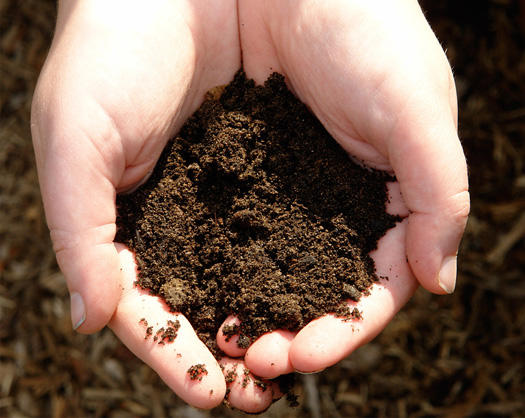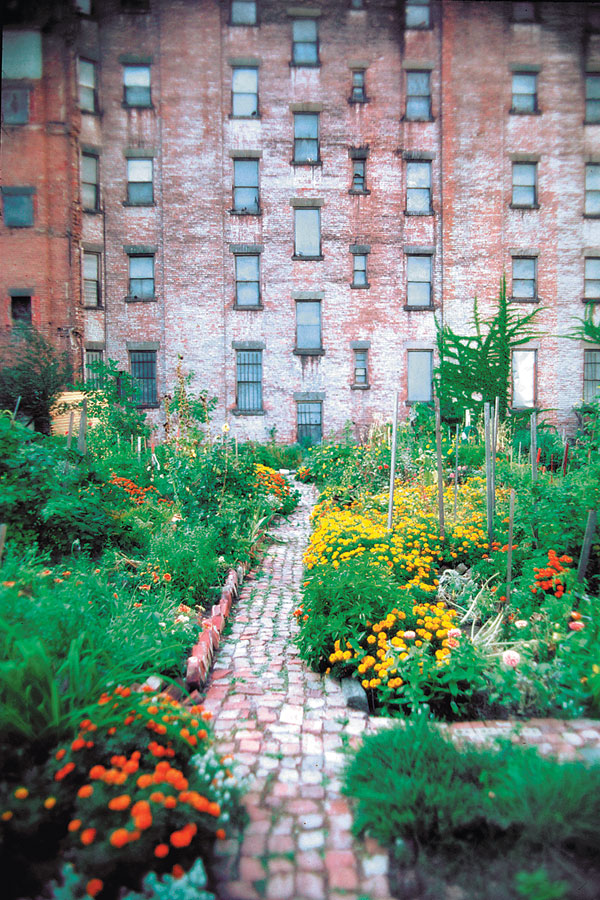 Dirt has a bad name. We assign it to foul, perverted things. Icky nasty things we do not touch lest it taint us, infect us. We are a society bent on cleanliness; antiseptic-ness. We pride ourselves in our civilized approach to dirt. Filth is what animals live in not we who are above such things.
That dirt which lies beneath our feet, it is alive, that soil; a mosaic of organic-ness which makes up much of our planet. We don’t think much of it but it’s there. We walk on it, build our homes on it, plant our food in it. It’s what holds it all together and it’s more important than people realize.
Throughout history, civilizations have prospered or declined as a result of the availability and productivity of their soils. Soil resources are critical to the environment as well as food production.
Dirt has a bad name. We assign it to foul, perverted things. Icky nasty things we do not touch lest it taint us, infect us. We are a society bent on cleanliness; antiseptic-ness. We pride ourselves in our civilized approach to dirt. Filth is what animals live in not we who are above such things.
That dirt which lies beneath our feet, it is alive, that soil; a mosaic of organic-ness which makes up much of our planet. We don’t think much of it but it’s there. We walk on it, build our homes on it, plant our food in it. It’s what holds it all together and it’s more important than people realize.
Throughout history, civilizations have prospered or declined as a result of the availability and productivity of their soils. Soil resources are critical to the environment as well as food production.
Soil is defined as a natural body consisting of layers that are primarily composed of minerals, mixed with organic matter. It is the loose covering of fine rock particles that covers the surface of the earth and is the end product of the influence of the climate, organisms, minerals and the passage of time.
When used in agriculture, it serves as the anchor and primary nutrient base for plants and soil resources that are crucial to the environment. It absorbs rainwater and releases it later, helping to prevent floods and drought. It cleans the water acting like a sponge as the water percolates through it.
Soil is the most abundant ecosystem on Earth and is home to countless lifeforms; invertebrates, bacteria, fungi and algae. It supports and plays a crucial role in all life on this planet.
Good soil should contain a healthy mixture of soil-based organisms. These are the naturally occurring micro-organisms that release powerful enzymes responsible for keeping it free of molds, yeasts, fungi and other parasites which would otherwise make normal plant growth impossible. These organisms fix nitrogen from the atmosphere into the soil and decompose organic compounds, including manure, plant residue, and pesticides; helping to prevent them from entering waterways and becoming pollutants.
The primary home of the vast soil food web is the topsoil. It’s the top layer of soil and contains most of the available nutrients. It’s where most of the biological activity takes place.
 Scientists believe that 24 billion tons of topsoil are lost every year to erosion by wind, water and other causes including the way we feed the planet. Conventional agriculture encourages the depletion of topsoil because the soil must be plowed and replanted each year. Many experts believe that our chemical dependencies are stripping the soil of its life-giving properties and turning it into unproductive, thus, lifeless dirt. One inch of topsoil can take 500 years to form naturally. According to current trends, the world has about 60 years of topsoil left.
Scientists believe that 24 billion tons of topsoil are lost every year to erosion by wind, water and other causes including the way we feed the planet. Conventional agriculture encourages the depletion of topsoil because the soil must be plowed and replanted each year. Many experts believe that our chemical dependencies are stripping the soil of its life-giving properties and turning it into unproductive, thus, lifeless dirt. One inch of topsoil can take 500 years to form naturally. According to current trends, the world has about 60 years of topsoil left.
Topsoil erosion occurs when the topsoil layer is blown or washed away. Without topsoil, little plant life is possible. This is a phenomenon known as the Aeolian processes. This has happened before notably during the Dust Bowl of the 1930’s when a period of severe dust storms greatly damaged the ecology and agriculture of the US and Canadian prairies.
On a dry grassland, the grass rooted into the soil can be the only thing keeping the soil stable. If too many animals are allowed to graze for too long, the grass can be stripped away and the soil will lose its anchoring roots. The area can become a desert. This is called desertification. Desertification and soil loss is a worldwide problem.

“According to the United Nations desertification is a creeping catastrophe. Already creating millions of environmental refugees worldwide every year, one third of the earth’s surface and the livelihoods of at least one billion people are threatened.”
By The Future World Project

This problem only deepens through time. As our global population continues to swell and demand for food increases, our ability to feed the world will become more difficult and in time perhaps impossible. Once land is lost it’s hard to gain it back. I know dirt isn’t exciting, most of us don’t think of it beyond a few scientists and the odd nut like me, but we all can do something about it. It is our planet and we have to right to our existence because it’s down to that. We need responsible and sustainable land stewardship not just here and there but everywhere.
A great place to start is at home, in our own yards. The website Wikihow features an excellent article; How to Prevent Soil Erosion . It is focused on what the average person can do about soil erosion at home and in the community. It is on the small scale but a good start.
Beyond that I think we the people need to raise awareness about this problem and through societal and monetary pressure persuade the movers and shakers in this world that we care about our topsoil and the future of the food supply. And that steps must be taken to prevent further loss and to reverse bad farming and land management practices. We need to adapt sustainable farming practices that encourage the development of a healthy topsoil by rewarding those who regenerate the environment and produce food that supports a healthier society. Most importantly we need to change the way we think about soil and how we use it. We must treasure it as the precious natural resource it is.
Future generations are counting on us…
Have a fruitful day,
♥
Nancy
.
“A nation that destroys its soils destroys itself.
― Franklin D. Roosevelt

“The soil is the great connector of lives, the source and destination of all. It is the healer and restorer and resurrector, by which disease passes into health, age into youth, death into life. Without proper care for it we can have no community, because without proper care for it we can have no life.”
― Wendell Berry

References and Related Articles
Woody Guthrie — This Land is Your Land Youtube
Health Benefits of Soil Based Organisms (positivehealth.com)
Soil Food Web (soils.usda.gov)
How to Prevent Soil Erosion Wikihow.com.
We Are What We Eat: Topsoil erosion YouTube
Topsoil – 1948 Educational Documentary
What if the world’s soil runs out? Time.com
Losing Ground: Re-thinking soil as a renewal resource (fewresources.org)
Soil Food Web (soils.usda.gov)
*


Food for thought, yes.
LikeLiked by 1 person
You wrote a really interesting and engaging post on what might be a dry (desert-ified?) subject. If more people had to have a role in their own food production, more people would realize what a treasure good dirt is. My garden started as yellow bull-tallow clay, with no drainage and no nutrients for vegetables. There was hardly an inch of topsoil. After that came the impenetrable clay. It is the miracle of all the life underground that we don’t see, that after only a couple of years of layering compost and autumn leaves on my veggie beds, i could easily put my arm in topsoil up to my wrist. After another couple of years i could get half my arm in the topsoil easily. All without digging and destroying soil structure. Hooray for all the dwellers in the dirt who toil so tirelessly to create that which we are all too ready to destroy .
LikeLike
Ever since I took a composting class years back, I feel that the soil in my garden and potted plants is so much happier. Nothing like healthy dirt. Nice post.
LikeLike
Love this post Nancy. You always manage to sum up ideas and thoughts so well. And get me thinking too. I like getting dirt under my fingernails…. just doesn’t look so nice! LOL! Have a great weekend!
LikeLike
Hey Cathy, thanks. It’s a boring subject but I was compelled to write about it. I too have dirt under my nails; can’t seem to get rid of it completely this time of year. 🙂 Have a great weekend yourself!
LikeLike
I just watched a movie called “Sea Change” and I think our oceans and water are equally challenged, if not more so. 😦 Not good.
LikeLiked by 1 person
I agree with you my friend. 😦
LikeLike
Excellent read. Thank you.
LikeLike
Thank you. 🙂
LikeLiked by 1 person
I’m a gardener and dirt is my friend. Getting your hands in soil feeds one spirit.
Coffee is on
LikeLike
I couldn’t agree more! Thanks Peppylady. 🙂
LikeLike
I love dirt.. I live for dirt! I want to marry dirt and have it’s babies… Ok I love dirt! Today is the last day I am on this dirt…
LikeLike
I am glad for you and dirt. When is the wedding and am I invited? 🙂
Hitting the road my adventurous friend? Say Hello to the open sky for me.
LikeLike
Last day in this house today.. After today it’s The Firewood Temple
LikeLike
Sounds hot.
LikeLike
If future generations are depending on us, they are fu . . . er . . . in trouble.
LikeLiked by 1 person
I know what you mean Disperser.
LikeLike
I love your writing Strawberryindigo, and I feel I just learned a good deal (I love learning). I had no idea how important dirt was beyond the three field rotation of the early Middle Ages and a bit of the Dustbowl, but did not know the extent. Dang. Here, here, for good dirt! 🙂
LikeLike
Hey Niaaeryn, Thanks. I have been meaning on writing this for a while, It is a subject dear to me but frankly it is a bit dry and heavy on the information. Here’s to good dirt too, we should have a toast. 😉
LikeLike
Great piece Nancy! Very informative- Cheers 😊
LikeLike
Hey Sparky! Thanks. Good to see you. 🙂
LikeLike
I know I’ve been intermittent on WordPress since I started on Bubblews. You should chk out that site, I found another too called Triond. They pay you for your articles. 😉
LikeLike
Interesting, I should check it out. I am looking to new avenues…thanks.
LikeLike
No problem! Good luck 😊
LikeLike